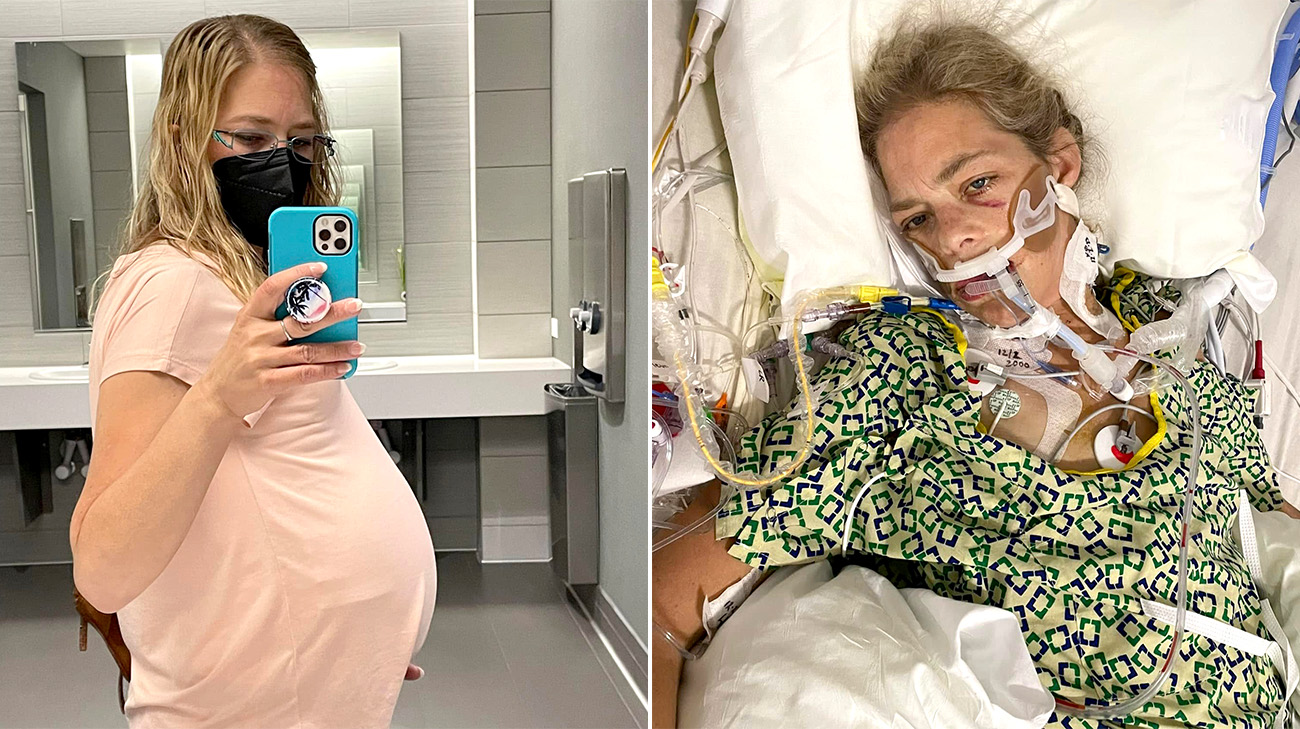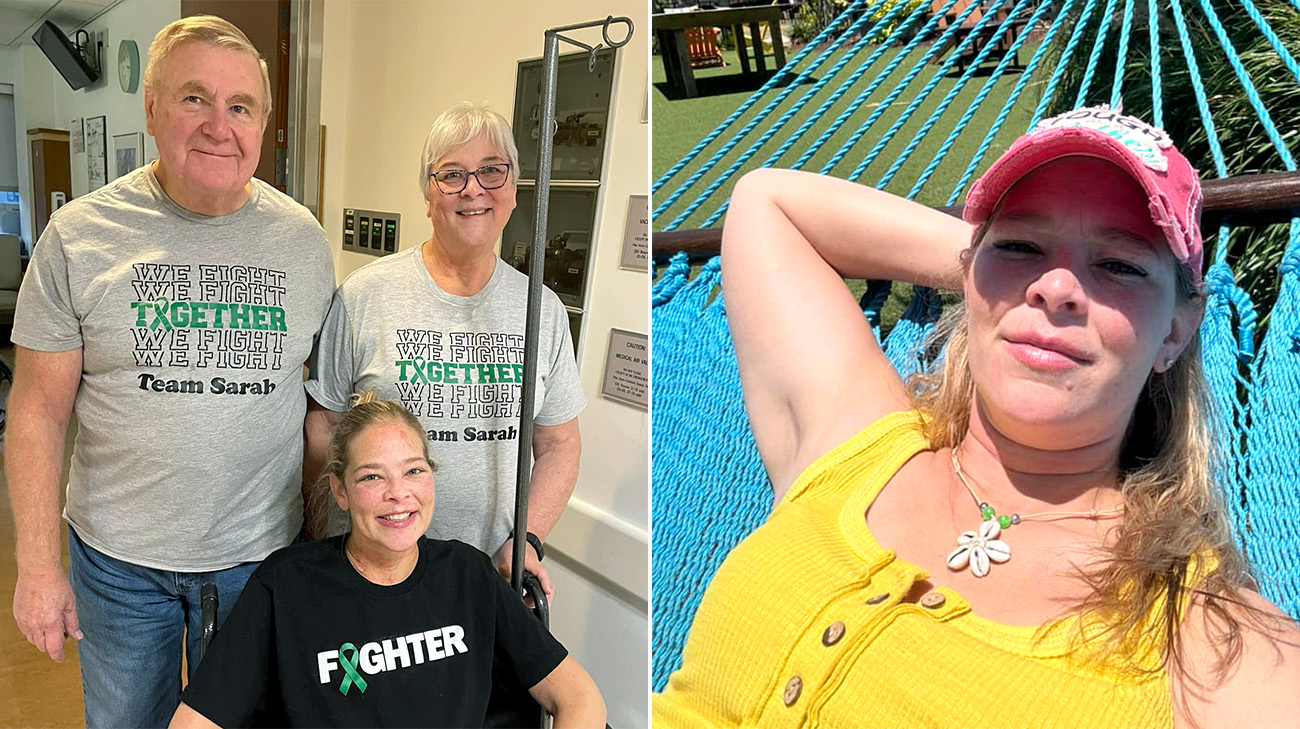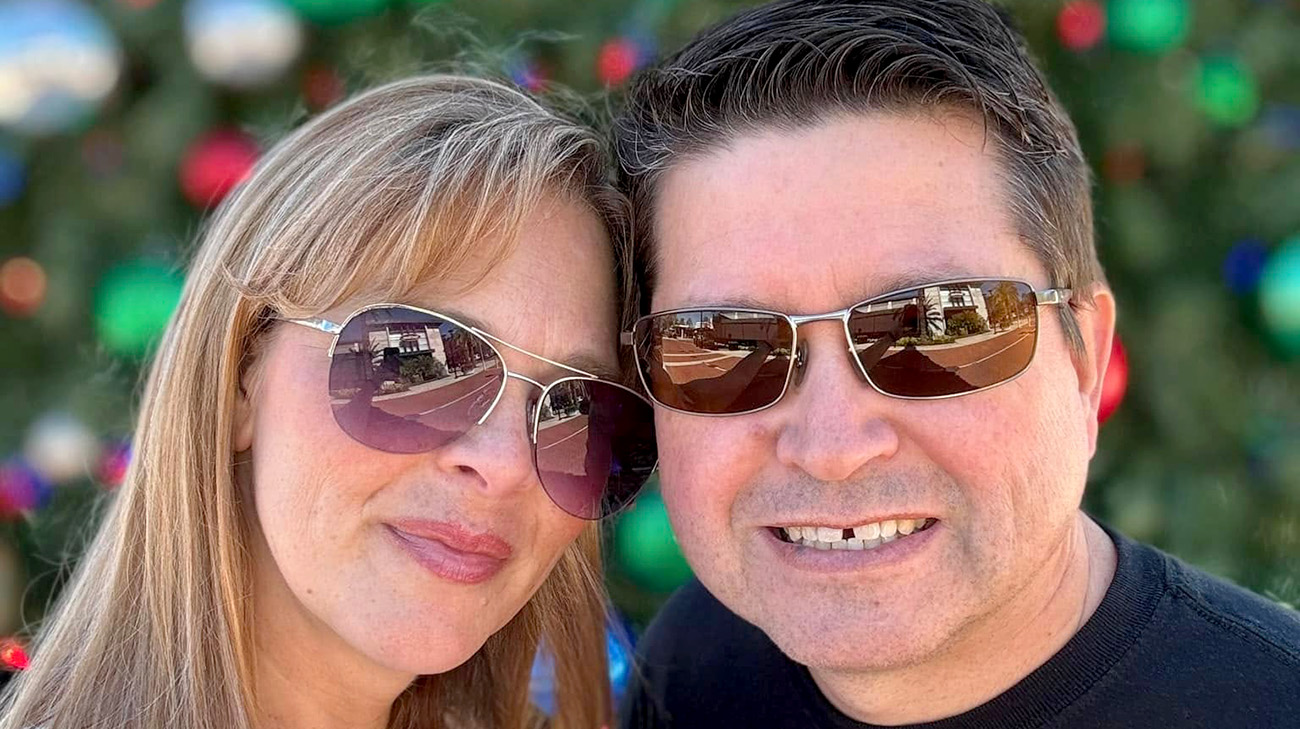Sarah Minton remembers being so unwell during her health journey that she planned her own funeral. Today, the 42-year-old says she feels like she's 18 again. Sarah credits her impressive progress to a second opinion, which saved her from needing a double lung transplant in addition to a life-saving liver transplant.
“I knew it would be difficult enough to get a liver transplant, and I felt like I wouldn't survive a double lung transplant. Looking back, getting a second opinion was the life-changing experience for me. I'm grateful for this second chance,” says Sarah from Rainsburg, Michigan.
She first went to the doctor in 2011 after experiencing abdominal pain and jaundice. Sarah, who was 29 years old at the time, was diagnosed with polycythemia vera by doctors. He was diagnosed with Budd-Chiari syndrome, a rare blood disorder in which the body produces too many red blood cells, and another rare disease that damages the veins that carry blood. The part from the liver becomes blocked or becomes too narrow. Blood clotting is a risk of polycythemia vera, which can lead to Budd-Chiari syndrome and lead to jaundice and liver failure.
“When I was first diagnosed with blood and liver diseases, doctors said these diseases would eventually require a liver transplant,” says Sarah.
For nearly 10 years, she was able to maintain good health and a relatively good quality of life by seeing doctors near her home. That was until Sarah discovered in 2020 that she had liver cancer.
“They caught the cancer very early and I underwent radiotherapy, but my liver function deteriorated and I found out I needed a transplant sooner than expected,” Sarah says.
Her care team in Michigan also discovered that she had pulmonary hypertension. This means that the blood pressure in the pulmonary artery, which carries oxygen-poor blood from the heart to the lungs, is high. In Sarah's case, medication is unlikely to be the answer, and she says she will eventually need new lungs in addition to a liver transplant.
“That's when I decided to go to Cleveland for a second opinion. I didn't want to get a lung transplant either, so I needed to know if there were other treatments,” Sarah says.
Sarah came to the Cleveland Clinic in Cleveland, Ohio, and first worked with pulmonologists Dr. Gustavo Heresi and Dr. Adriano Tonelli to try to lower the pressure in her lungs with medication. One of them had to be administered through an IV and had to be connected to a portable infusion pump 24/7. “I slept and showered with it on, and for some reason the pump wouldn't come off,” Sarah emphasizes.
Sarah had to carry a portable infusion pump in her bag everywhere she went. It was necessary to administer medication for her pulmonary hypertension. (Courtesy of Sarah Minton)
In addition to having to carry an infusion pump everywhere, Sarah also had fluid buildup in her abdomen due to her liver disease. She also experienced a severe drop in platelets, small cell fragments in the blood that help stop bleeding in the event of an injury. Due to her underlying disease, her spleen was also enlarged. It took a multidisciplinary team of doctors to manage Sarah's condition, and after two years her lung function improved. She may begin considering a liver transplant and was eventually referred to critical care specialist Dr. Matt Silva. The doctor had recently launched a consultation service to assess patients with pulmonary hypertension to ensure transplant surgery was safe.
“Patients with pulmonary hypertension are at higher risk when entering the operating room, so we offer a more complex testing protocol than is typically done before transplantation to ensure that the heart can withstand the stress of surgery. ,” says Dr. Silva.
In Sara's case, Dr. Silva performed a right heart catheterization and an echocardiogram (ultrasound of the heart) to measure pressure in the blood vessels in her lungs and heart function. He says they then simulated some of the stress of an operating room to see how well her heart would withstand the procedure.
“Fortunately, Sarah responded well to all the tests. She didn't have any deterioration. In fact, she has what's called a cardiac reserve in case something goes wrong. “The combination of all these factors made us feel that she could safely undergo a liver transplant,” says Dr. Silva.
While waiting on the transplant list, Sarah visited her doctor frequently to manage the fluid building up in her abdomen and her low platelet count. With no energy or appetite, the past few months had been the most difficult for Sarah, and she was preparing for the worst-case scenario.

Sarah experienced ascites due to a liver condition that causes fluid to build up in the abdomen. (Left) Sara had frequent hospital stays as complications arose along the way. (Right) (Courtesy of Sarah Minton)
“My parents sat me down one day and said, 'If you don't get the call for a liver transplant, we need to hear what you want in terms of funeral arrangements.' And they were right. It felt like the end was near, and I didn't know if I would make it to my youngest daughter's high school graduation,” Sarah says.
Initially, Sarah's doctors thought they might be able to transplant part of her liver from a living donor. And after tests revealed that some of her next of kin were incompatible, they started spreading the word that she needed a donor. In living donor liver transplantation, up to two-thirds of the liver can be safely removed as long as the tissue is healthy and capable of regeneration.
Sarah said more than 170 people applied to become living donors. However, her care team changed course based on her condition and decided she needed a whole liver, which could no longer be provided from a living donor. But Sarah already received a phone call that changed her life, with word that she needed a liver.
“One day my dad got a call from someone who had just lost a family member, and they happened to be organ donors, and the family wanted to donate their loved one’s liver to me,” Sarah says. .
After all, Sarah knew that this donor's liver was unlikely to be a match for her. Thankfully, the odds were in her favor. A deceased donor was found.
“It was unbelievable. We all cried happy tears. But there is also great sadness because we know this family has just lost a loved one,” Sarah says.

After spending more than a month in the hospital following her transplant, Sarah began her recovery at home and was able to start doing the things she loves again. (Courtesy of Sarah Minton)
In 2023, Sarah underwent a liver transplant performed by Koji Hashimoto, MD, director of liver transplantation at the Cleveland Clinic. Although the surgery went well, Sarah experienced bleeding complications due to her low platelet count. She was hospitalized for a month and a half.
“Once I got home, my recovery was really quick. I started walking farther and farther and had more energy. Within five months, I was feeling so much better that I was walking even more than before the transplant. Sarah said, adding that finding ways to stay positive throughout the process also helped her recovery.
About six months later, Sarah reached another milestone. Her lungs were healthy, so she no longer needed a portable infusion pump. No longer having to carry around medical equipment, she is able to enjoy life independently again.
“I couldn't swim with the pump because I couldn't get it wet. As soon as I didn't need it, I jumped in the pool. I was so excited to finally be able to swim again,” Sarah said. Masu.
Sarah continues to follow up with her care team to manage her blood condition and pulmonary hypertension. She is grateful that her doctors were proactive and helped her avoid a double lung transplant.
“I don't know if I would have made it without this team. They saved my life and I can't thank them enough,” Sarah says.
Dr Silva added: “It would have been even more difficult to have her undergo two surgeries, especially considering that she has pulmonary hypertension and a low platelet count.” We are happy to see Sarah grow up. ”

Sarah is now looking forward to making new memories with her loved ones, including her fiancé. (Courtesy of Sarah Minton)
After her liver transplant, Sarah celebrated her daughter's 20th and 18th birthdays, bought a house, and got engaged. Everything she says would not have been possible without her care team and donors.
“I cannot thank my donors and their families enough. I think of them and pray for them every day. I do everything I can for them to live my life to the fullest. I want them to know that I'm doing my best. I'm so grateful for the second chance at life. Becoming an organ donor saves lives.” says.
Related institutions: Institute of Gastroenterology and Surgery, Institute of Respiratory Medicine

